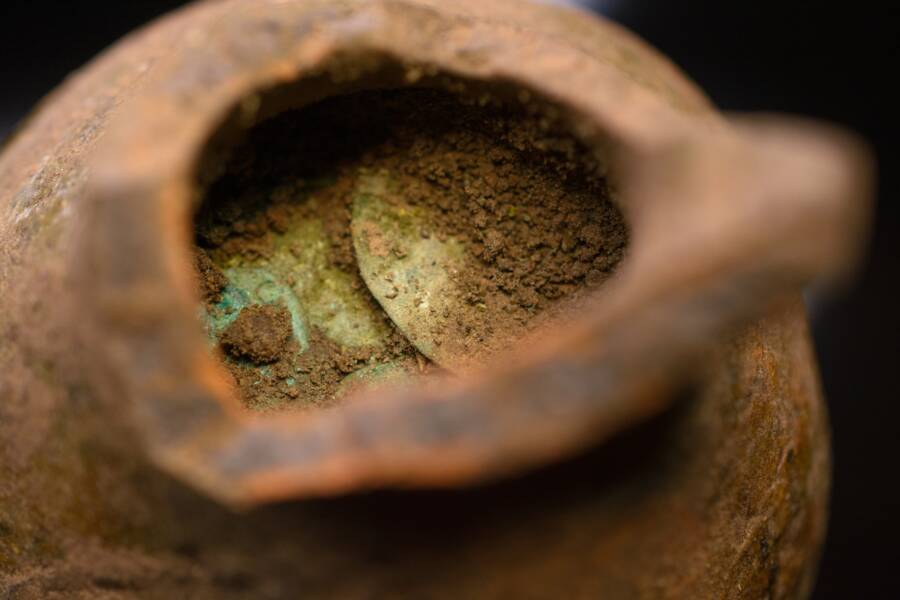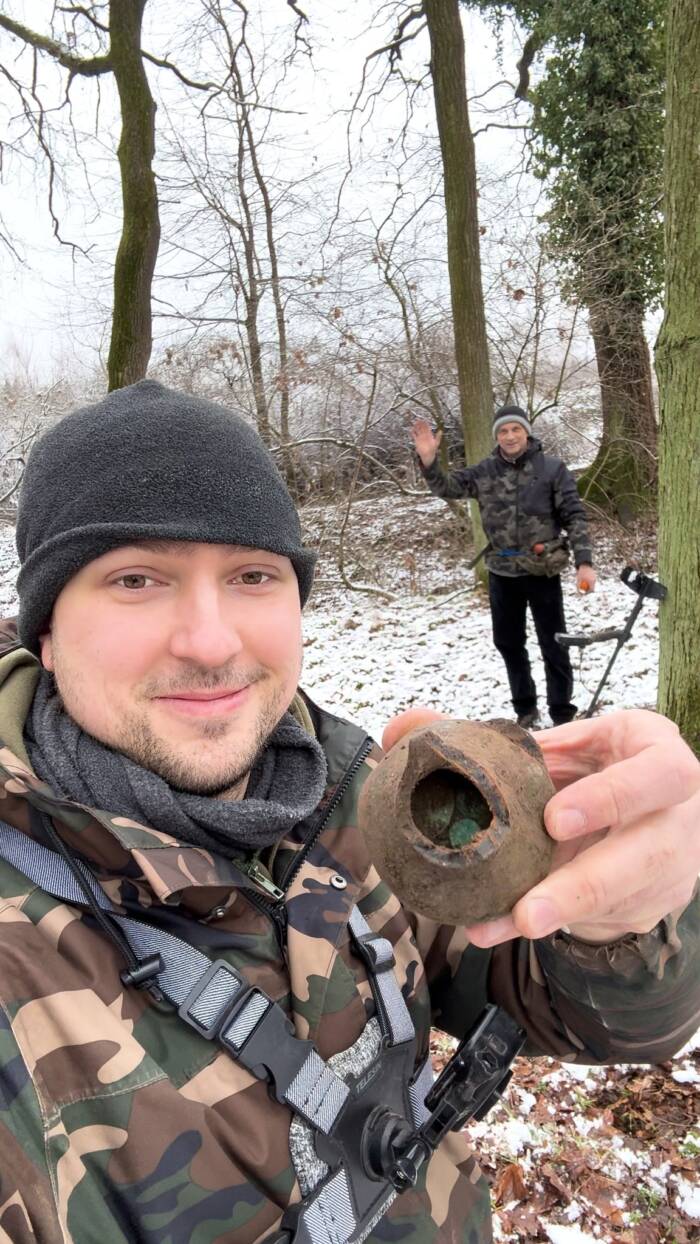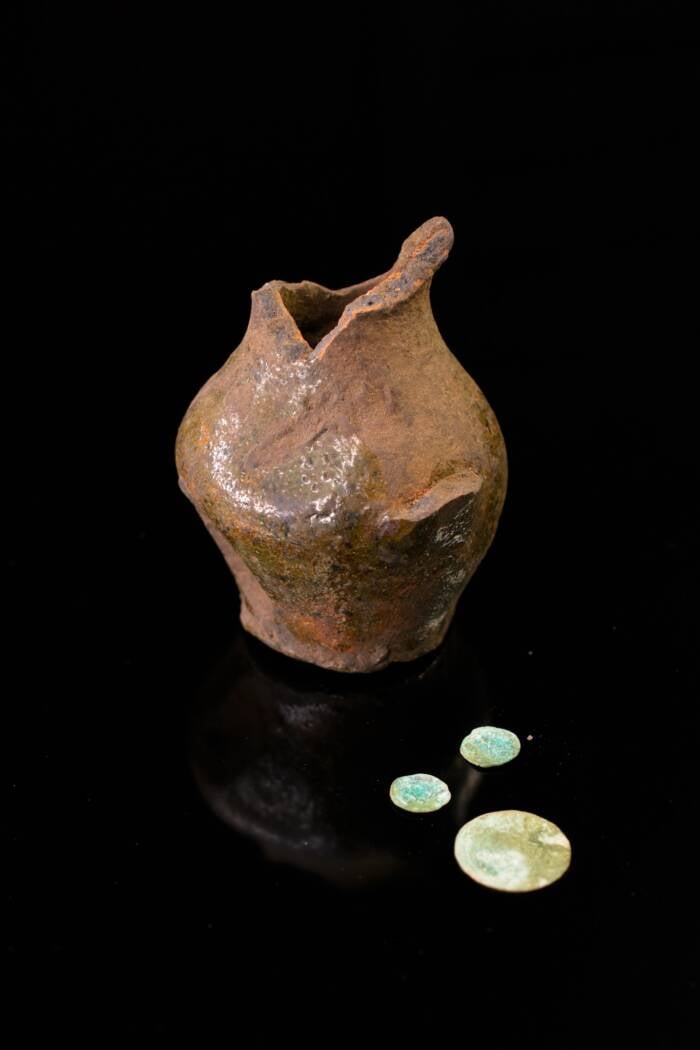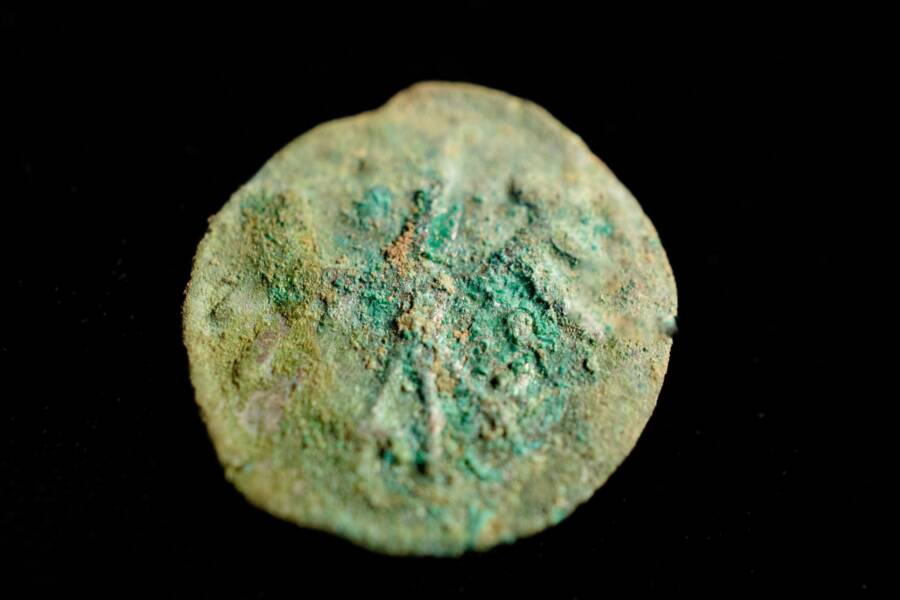Researchers have uncovered 592 silver denarii and 26 silver half-groschen sitting atop four gold ducats that had been wrapped in linen to keep them safe and hidden.

Bocheńskie Stowarzyszenie STATER/FacebookThe coins were found inside a ceramic vessel, which helped preserve them over the centuries.
On a cool spring day in 2025, a group of amateur metal detectorists set out to explore a forest near the town of Bochnia, Poland. During their trek, they stumbled upon a small clay pot buried in the earth — stuffed with hundreds of centuries-old coins.
The coins, buried 600 years ago, were largely minted during the reign of Casimir IV Jagiellon, the king of Poland and Grand Duke of Lithuania from 1447 until 1492. They were possibly part of a merchant’s savings, and it’s likely that they were buried for safekeeping during a time of civil unrest.
Discovering The Medieval Coin Hoard In A Forest Near Bochnia, Poland
According to Poland-24, the coin hoard was originally found in April 2025 by brothers Wojciech and Marek Budzyn, members of the Bochnia Treasure Hunters’ Association STATER. The brothers were searching for traces of a medieval trade route when their metal detector started to ping.

Bocheńskie Stowarzyszenie STATER/FacebookWojciech and Marek Budzyn with the coin hoard.
“The first signal from our metal detector was very weak — almost unnoticeable — but when we checked again with another device, we realized there might be something worth digging for,” Wojciech Budzyn recalled.
The brothers dug into the dirt and, about a foot down, they unearthed a small clay pot. Inside the pot were silver denarii, clearly visible through the dirt clogging up the vessel.
Since the initial discovery of the hoard, researchers at AGH University in Kraków have been able to fully study the coins. They found that the clay pot contained 622 coins that were likely buried sometime in the 15th century.
There were 592 silver denarii, minted during the reign of Casimir IV Jagiellon, the king of Poland and Grand Duke of Lithuania who ruled from 1447 until 1492, 26 silver half-groschen in two different sizes, and four gold ducats that were minted during the reign of Sigismund of Luxembourg, the Holy Roman Emperor and King of Hungary and Bohemia from 1387 to 1437.
The researchers also found that the gold ducats had been wrapped in linen, tied with string, and intentionally placed beneath the silver coins.

Bocheńskie Stowarzyszenie STATER/FacebookThe clay pot was filled to the brim with hundreds of coins, which were buried in the forest roughly 600 years ago.
“We never expected to find something like this,” exclaimed Wojciech Budzyn. “It’s a dream come true for any treasure hunter — but above all, it’s a part of Poland’s story that we are proud to have helped uncover.”
Indeed, the coins seem to date back to a noteworthy period in Poland’s history, a tumultuous era of great territorial and economic growth.
The History Behind The Silver Denarii And Gold Ducats Of The Bochnia Coin Hoard

Bocheńskie Stowarzyszenie STATER/FacebookOne of the silver denarii, minted during the reign of Casimir IV Jagiellon.
So who did the coin hoard belong to? It’s impossible to say today, but historians note that the 15th century was an eventful era in Polish history. During Casimir IV’s reign, Poland grew larger and more wealthy, and the discovery of the coin hoard suggests that Bochnia was once an important economic hub.
But such growth also came with growing pains, and historians suspect that the coin hoard was hidden, possibly by a merchant, during a time of civil unrest or conflict. For reasons unknown today, the person who buried the coins was unable to retrieve them. For some 600 years, they remained forgotten deep within the forests near Bochnia.
But now that the coin hoard has been studied, these medieval relics will be transferred to the Stanisław Fischer Museum in Bochnia for public display.
“It’s about passion, respect for history, and preserving our heritage,” Marek Budzyn remarked. “We are happy that the coins will be studied and displayed for everyone to see.”
After reading about the hoard of hundreds of medieval coins found in a Polish forest by a pair of metal dectorists, discover the story of the winged hussars, Poland’s fierce cavalrymen who wore wings on their backs. Then, learn about the Battle of Wizna, the forgotten fight at the beginning of World War II that saw a tiny Polish force hold back a much larger Nazi army.





